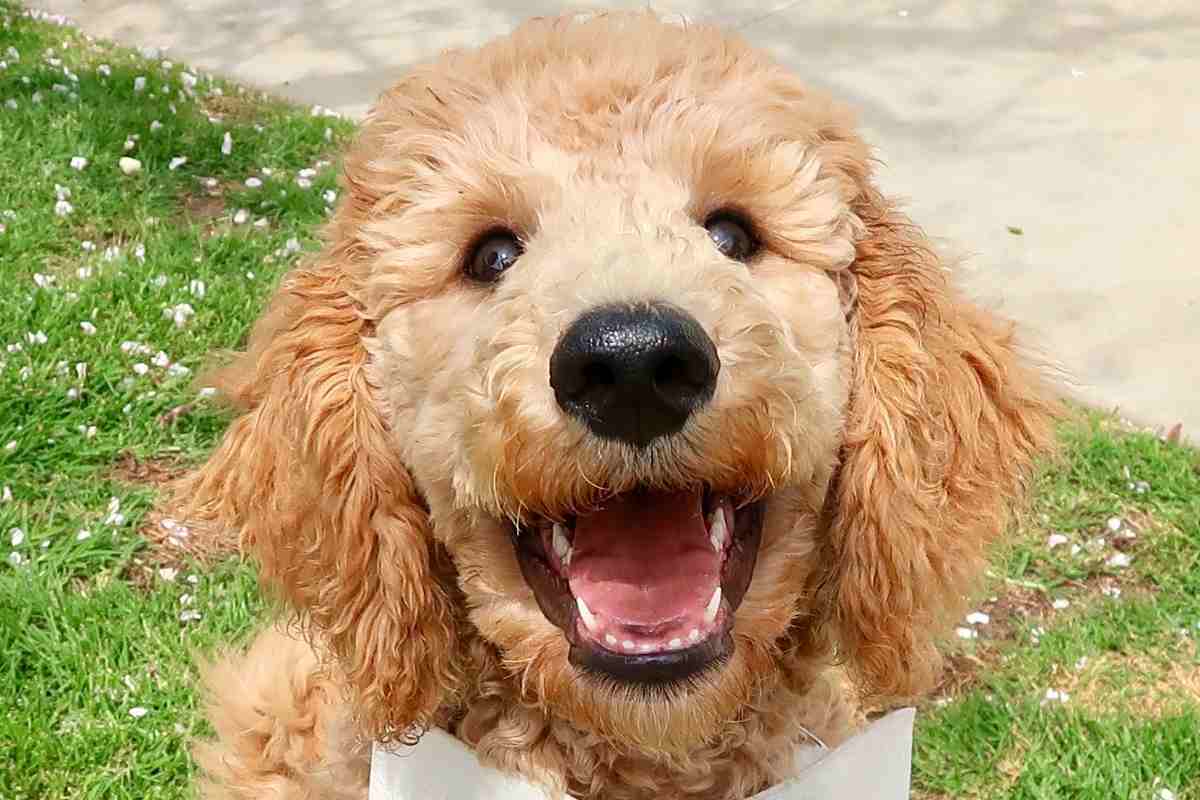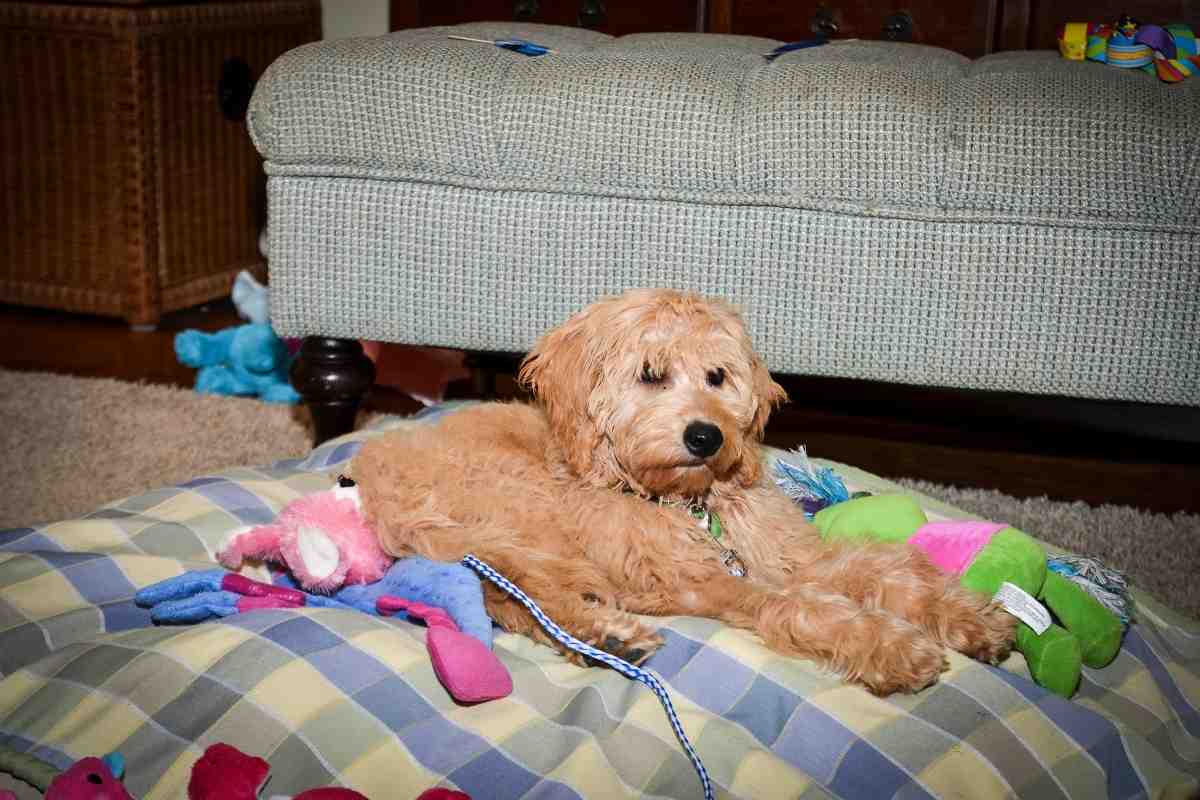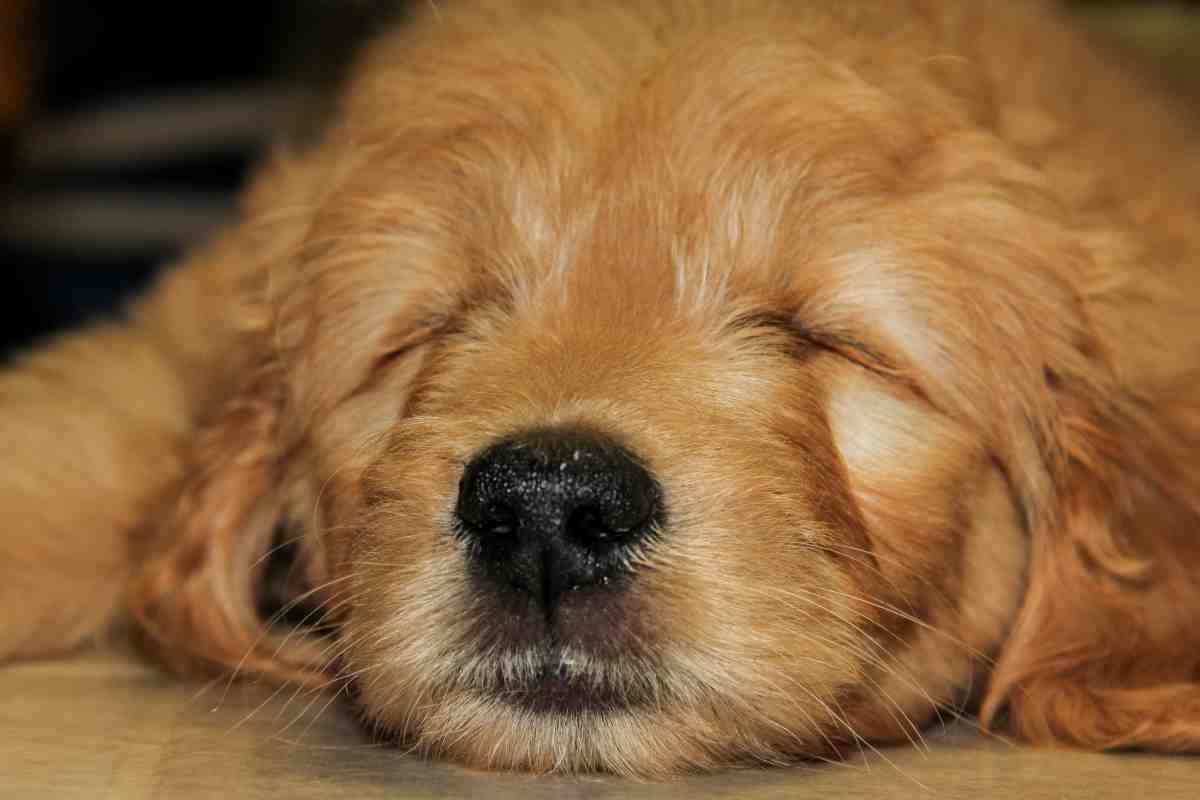Can You Breed Two F1B Goldendoodles?
Our beautiful Goldendoodle Lexie is our precious little gem. She brings much joy to our household, and our two daughters love playing with her and spending time making memories. We have had her now for five years. In those years, we have been through the ups and downs of pup parenting. We have learned an awful lot about this breed, and we love sharing our knowledge with anyone interested in learning more about this. One area that we found confusing in the beginning and realize others may find confusing. Is breeding a hybrid or crossbred dog.
Read on to find out what we learned about breeding a crossbred Goldendoodle.
Can You Breed Two F1B Goldendoodles?
Can you breed two f1b Goldendoodles? Yes, you can breed two f1b Goldendoodles. The f1b Goldendoodle can be thought of as a code or way of categorizing hybrid or crossbred dogs’ multi-generations.
Deciphering the different categories of Goldendoodle generations can be very confusing at first glance, but it is easy to understand with a little knowledge beforehand.
Since the Goldendoodle is a hybrid dog, a mix of two purebred dogs when they are bred, they need to be marked to help breeders know what generation and purebred background.
The F1B Goldendoodle is a child of two different purebred dogs. They are a first-generation dog that has been backcrossed to the original purebred line.
When two of these dogs are bred together, their children become an F2B Goldendoodle. This F2B Goldendoodle will have more specific characteristics of the two breeds. Usually, this is done to promote a special appearance in this generation of dogs.
Anyone curious about adopting a Goldendoodle understands there are many things to consider. These adorable teddy bear looking dogs are a crossbred or hybrid dog that originated in the 1990s as a companion animal.
Breeding one of these dogs, F1B Goldendoodle or otherwise, must come with skill, knowledge, and forethought. Breeding two F1B Goldendoodles together can create a more appealing dog with better health and qualities that potential dog owners seek.
The Goldendoodle was bred from two distinct purebred dogs having 50% of each dog breed. With this type of breeding, it can be hard to decode the terminology that comes with each dog’s future generation.
The F1B Goldendoodle is a child of purebred parents that have been backcrossed. When they are bred together, they will create another generation of Goldendoodle, slightly different from the parents.
When you put two of these Goldendoodles together, you further cross or hybridize the breed, increasing a particular parental breed amount. This brings with it the potential for an increase in the positive qualities of that breed.
What is a F1B Goldendoodle?
An F1B Goldendoodle is a generation of Goldendoodle that comes after the dog’s first, or purebred age. They are a first-generation Goldendoodle that was backcrossed or inbreed with one of the original pure breeds that make up their ancestry. This was done to decrease or increase certain qualities in this generation of dogs, making them more appealing to potential adopters and families.
The F1B Goldendoodle was backcrossed to create a dog that was hypoallergenic and non-shedding. This comes from the 75% that they have one purebred dog.
This type of back breeding was done to create a more appealing dog with qualities that many potential dog owners look for in a dog. The F1B Goldendoodle is prized for being an excellent choice amongst potential dog owners that have moderate allergies.
They maintain the same curly fur coat as the previous generation, but the downside is that they require a good deal of grooming to keep the fur matt free and looking beautiful. The f1B Goldendoodle is also healthier than the original two purebred parents due to being backcrossed with one of the original pure lines.

The F1B Goldendoodle’s common characteristics include a curly and hypoallergenic coat of fur that is non-shedding and better health than their original purebred parentage.
What does the F1B stand for when distinguishing one Goldendoodle from another?
The F1B stands for 1st generation child of purebred parents crossed back to that lineage again.
The terminology may seem confusing at first but is once understood. It is quite simple.
Each generation has a letter and a number. This helps differentiate one dog from another, but it also deciphers how much of each purebred parental line is in the dog. There is no need for this in purebred dogs because the line is always the same breed of dog. This situation isn’t so with a dog that is crossed between two pure breeds.
When two purebred dogs are crossed their children, the first generation of dogs will have an F at the beginning of the generation code. This F stands for Filial, which means hybrid and is used to distinguish the generations after the first or parental generation.
After the F in the generation code, there is a number. This number relates to the generation of that dog. They are the 1st generation child of the purebred parental dog or 2nd generation, and so on.
Now here is where things can get a little confusing. When creating a hybrid dog or crossbred dog, sometimes breeders will backcross that dog. The backcross is a more pleasant term for inbreeding a dog backward again with the pure breed line.
In the Goldendoodle case, it would mean breeding a 1st or 2nd generation Goldendoodle back to one of the original purebred dogs that initially made this breed.

If heads are not spinning yet, this is amazing, for when we first learned the terminology relating to Lexie and her breed, we were a bit confused. We happen to find the breeding of hybrid or crossbred dogs like Lexie very interesting. Once you understand the terminology, we believe you will too.
Where does the F1B Goldendoodle fit into the lineup of this breed?
Below is a chart to help create a clearer understanding of how this generational breeding works and where an F1B Goldendoodle fits in.
- Pure Breed Dog – 100% Pure bred dog breed
- F1- Goldendoodle – 1st generation Goldendoodle – 50% each purebred dog
- F1B – Goldendoodle – 1st generation Goldendoodle – Back Bred – 75% one pure breed, 25% other pure breed
- F2 – Goldendoodle – 2nd generation Goldendoodle – 50% each purebred dog
- F2B – Goldendoodle – 2nd generation Goldendoodle – Back Bred = 75% one pure breed, 25% other pure breed
There are other multi-generational crossbreeds, but for simplicity’s sake, we will keep it simple here.
As stated above, when two F1B Goldendoodles are bred together, they create an F2B Goldendoodle. This dog will have more positive qualities of one of the purebred dogs and less of the other.
Why would someone breed two F1B Goldendoodles?
There are a few reasons why someone would breed two F1B Goldendoodles.
One of the top reasons why someone might breed two F1B Goldendoodles together is for health reasons. When Two F1B Goldendoodles are bred together, they will carry certain good qualities and perhaps also some not so good qualities. These qualities can relate to health and wellness.
By breeding these two dogs together, there is hope that the health issues can be lessened or removed entirely from the Goldendoodle dog breed with these generations.
The same can be said for other issues relating to behavior, emotional, mental, and physical traits. By breeding these two F1B Goldendoodles together, these negative qualities can be removed and replaced with positive future generations. Examples would be a dog that was hypoallergenic or gentler.
Can there be any negative consequences to breeding two F1B Goldendoodles?
Of course. There can always be the potential for an increase in negative qualities when breeding two F1B Goldendoodles.
Quality breeders, however, have the experience and knowledge that can help prevent that from happening. When two F1B Goldendoodles are bred together, it is to increase the positive. During breeding two F1B Goldendoodles, the breeder will thoroughly know the dogs and their ancestral background.
This knowledge is what allows them to minimize or prevent negative qualities from appearing in the next generation.
Is it easy to breed two F1B Goldendoodles?
The breeding part is easy, but it is still a complicated process to go from breeding two F1B Goldendoodles and adopting. The purpose of coupling these two dogs together is to increase good qualities while leaving negative attributes behind.

This type of breeding, however, can be unpredictable. The breed may not know precisely what they are going to get with each dog. Individual characteristics and traits can be random because each dog comes from a more diverse genetic background.
With that, there comes the potential to pull in a broader assortment of positive and negative qualities. Each dog in the litter can be markedly different from their littermates.
Due to this diversity, one dog might be shaggier, while another will shed more, then yet another will not shed at all.
In Conclusion
Breeding two F1B Goldendoodles together is possible. By doing so, breeders can weed out negative qualities while increasing positive attributes.
This breeding of a hybrid Goldendoodle can seem confusing for some individuals wishing to understand their Goldendoodle’s lineage. It is helpful to know that this process is done to create a healthier and more desirable dog and a unique dog.
Regardless of what generation a Goldendoodle is, we love them none the less for their cuteness, personality, and loveable nature! Isn’t that all that matters anyway?